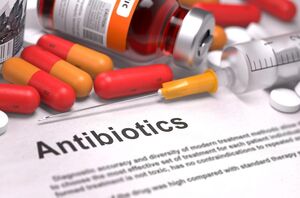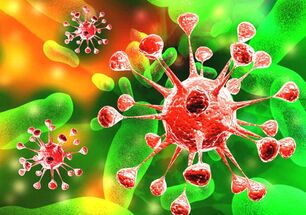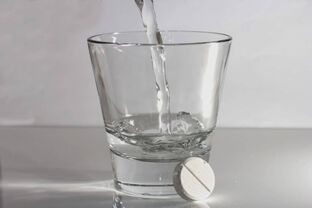Antibiotic therapy is the mainstay of treating prostate inflammation. Antibiotics for prostatitis are divided into several groups. The choice of a drug depends on the type of inflammatory process and the features of the patient's disease course. Pathogenic microorganisms often develop resistance to the drug's active ingredient. In such cases, antibiotic therapy is selected taking into account the susceptibility of pathogens to certain active substances, and drugs are prescribed only after bacterial analysis of prostate juice.
Why are antibiotics needed?

When prostatitis worsens, the first priority is to stop the inflammatory process. Antibacterial therapy is indicated for this, as only antimicrobial agents can quickly eliminate the pathogen that triggers the inflammatory process.
Symptomatic treatment without the use of antibiotics is ineffective and only gives temporary results. All anti-inflammatory, analgesic and antipyretic drugs for prostatitis are only used in addition to antibiotic treatment.
The elimination of pathogens enables:
- relieves pain syndrome;
- normalizes body temperature;
- improves urodynamics;
- to normalize the function of the prostate.
Thus, antibiotics for prostatitis in men can not only eliminate the inflammatory process, but also relieve symptoms. The improvement in well-being is due to the elimination of the swelling of the inflamed organ. The inflamed organ always increases in size and puts pressure on the surrounding tissue, causing pain.
Antibiotics treat both the symptoms and the cause of the disease.
The main advantage of antimicrobials is that they work quickly and are easy to use. Antibiotic treatment for prostatitis is carried out with pills, injections, or the use of suppositories.
In order for drugs to work really quickly, you must select them strictly according to your doctor's instructions. To determine the nature of pathogenic microorganisms, you first need to conduct a series of examinations - a bacterial study of the composition of the secretion of the prostate. Only the determination of the causative agent of the inflammatory process guarantees the choice of optimal drugs that will quickly relieve the exacerbation.
It is important to note that antibiotics for prostatitis are only indicated for the treatment of the acute and chronic infectious form of the disease. With non-infectious inflammation, the development of which is due to age-related changes or a violation of the trophism of the prostate, the use of antimicrobial drugs, as well as with adenomas, is inappropriate.
Types of drugs
In the treatment of prostate inflammation, preference is given to broad-spectrum drugs that are effective against a large number of pathogens. This choice is explained by the fact that, in some cases, prostatitis is caused by the simultaneous action of several types of pathogens at the same time.
The following drugs are effective antibiotics for prostatitis:

- fluoroquinolones;
- cephalosporins;
- macrolides;
- tetracyclines;
- penicillins.
Each type of drug is only effective for certain groups of bacteria.
Each of the listed antibiotics for prostatitis is effective against certain microorganisms. Drugs from different groups are interchangeable if the inflammation is caused by opportunistic microorganisms such as E. coli.
Fluoroquinolones
Fluoroquinolone group antimicrobial drugs are conventionally referred to only as antibacterial drugs. In terms of their pharmacological action, these agents show pronounced antibacterial activity, but in terms of their composition, they are not antibiotics.
The main difference between fluoroquinolones and broad spectrum antibiotics is their synthetic composition. In contrast to antibiotics from the group of penicillins or tetracyclines, fluoroquinolones have no natural analogues. This is the main advantage of drugs in this group - since there is no natural substitute for the active ingredient, it means that pathogens cannot develop resistance, and treatment of chronic prostatitis with an antibiotic fluoroquinolone is more effective.
Medicines in this group work against most bacteria, including sexually transmitted infections (chlamydia, trichomonas). Today, fluoroquinolone is the best drug for treating sluggish bacterial prostatitis. Subject to the correct dosage and choice of drugs, fluoroquinolones show a rapid therapeutic effect and cause a minimum of side effects compared to antibiotics. The drugs in this group are toxic, so it is important to follow the doctor's recommended treatment regimen.
For chronic bacterial inflammation, drugs of this group are used over a long period of 3-4 weeks.
The list of drugs in the fluoroquinolone group is quite extensive. To choose the optimal medicine, you need to consult a specialist. Depending on the doctor's prescription, the treatment regimen and the duration of the course of treatment can be adjusted.
Penicillins
In most cases, doctors prescribe penicillin drugs for the first episode of prostatitis. Such an antibiotic for prostatitis is well tolerated by the body and has a pronounced therapeutic effect, suppressing the activity of a number of opportunistic bacteria that cause inflammation of the prostate.
Most people are resistant to this group of drugs. This is due to the fact that penicillins have been used to treat bacterial inflammation for 50 years. To increase the therapeutic effect, the use of combined antibiotics for the treatment of prostatitis in men is practiced - these are drugs with penicillins and clavulanic acid.
By using combined drugs, you can quickly achieve a therapeutic effect. These drugs are well tolerated, have few side effects, and are affordable, which makes them popular. Release forms include suppositories for prostatitis with antibiotics, tablets and capsules, and solutions for intramuscular injections. Despite the fact that injections of antibiotics can quickly stop inflammation, because of the ease of administration, men prefer the tablet form of drugs.
Doctors and patients speak well about these products and state:
- pronounced antibacterial effect;
- convenient release form;
- acceptable cost;
- minimal side effects.
Thanks to the clavulon in its composition, the preparations penetrate well directly into the tissue of the prostate.
Drugs in this group are taken for three weeks. The maximum dosage is 1 g of active ingredient per day, which corresponds to 1-2 tablets depending on the form of release.
Often these drugs cause gastrointestinal disorder, which manifests itself in diarrhea, nausea and stomach pain. In order to minimize the negative effects on the mucous membranes, it is worth consulting your doctor regarding the appointment of probiotics.
Tetracyclines
The use of tetracycline antibiotics to treat prostatitis in men has decreased in recent years. This is due to the large number of side effects and insufficient absorption of the active substance into the tissues of the inflamed prostate.
The advantage of drugs in this group is a pronounced activity against chlamydia and ureaplasma. The disadvantage is a negative impact on the gastrointestinal tract, a large number of cases of individual intolerance and negative reactions from the body.
Because of the risk of complications, you should not take this group of medicines alone. The treatment regimen and the duration of therapy are determined individually by the doctor.
Macrolide
If you are wondering what antibiotics to take for prostatitis, many prefer macrolides. Drugs of this group are widely used, they are especially often prescribed in cases of ineffectiveness of other drugs, which arise when pathogenic microorganisms develop resistance.
In contrast to other antibiotics, macrolides have a small area of application. These drugs are only prescribed for inflammation caused by chlamydia, ureaplasma, and gonococcal infections.
Despite the fact that the mechanism of action of these drugs on the inflamed prostate is not well understood, the main advantage of the drugs is low toxicity and minimal side effects. This, along with a fairly affordable cost, makes the drug a popular remedy for prostatitis in men.
The course of treatment depends on the severity of the inflammatory process and takes an average of three weeks. Preparations of the macrolide group are produced in the form of tablets, as well as solutions for injections, so the latter are not widely used due to their inconvenient use in patients.
Cephalosporins
Antibiotics of the cephalosporin group are one of the most effective drugs for bacterial prostatitis. The drugs work quickly to relieve symptoms a few days after starting treatment. Because of the affordable cost, drug treatment will be inexpensive and affordable for everyone. Medicines are well accepted by the body and have practically no side effects. However, they have one major disadvantage: they are only made in injection solutions. Not everyone can give themselves an injection at home, so treatment with cephalosporins is mainly carried out in a hospital.
The treatment regimen for prostatitis with these drugs is selected by a doctor. Usually 1 injection of the drug per day is prescribed for 7-14 days.
After examining the patient, the doctor decides which medication to choose. Medicines of this group are characterized by a broad spectrum of activity, but are inactive against chlamydia.
List of medicines in tablets

It is most convenient to treat prostatitis at home with pills or capsules. Popular groups of drugs in this form of release:
- penicillins;
- macrolides;
- fluoroquinolones;
- tetracyclines.
How to treat inflammation, as well as the duration of its course and the treatment regimen - this depends on the dosage of the drug and the form of the disease. Antibiotic therapy lasts 10-12 days for acute inflammation and three weeks for chronic inflammation.
It is recommended to take antibiotic tablets immediately after meals. It is advisable to drink the capsule at the same time each day. If the drug is used several times a day, the time intervals between doses should be the same.
Antibiotic suppositories
Another convenient form of home remedy is rectal antibiotic suppositories.
The duration of treatment is 7 to 21 days, depending on the severity of the symptoms. Often, in order to get the best therapeutic effect, doctors prescribe the simultaneous use of suppositories and antibiotics in tablets, while choosing drugs with different active ingredients. This combination therapy allows you to stop the inflammatory process as soon as possible.
candles are used once a day. They are inserted rectally at bedtime.
Precautions
All antibacterial drugs have a number of contraindications. This list should be known before starting to take the drug. Absolute contraindications for taking antibiotics:
- individual intolerance;
- acute kidney failure;
- acute liver failure;
- simultaneous use with alcohol.
Most of the side effects during antibiotic therapy are observed in the gastrointestinal tract. These include intestinal dysbiosis, diarrhea, stomach pain, nausea with vomiting.
If adverse reactions from the body occur, the drug can be replaced with a drug with a different active ingredient in the composition. The prescription of fluoroquinolones as a substitute for penicillin antibiotics due to the development of side effects or their intolerance is widely practiced. Despite this, analogues should be selected by a doctor, depending on the characteristics of the reactions to drugs.

































